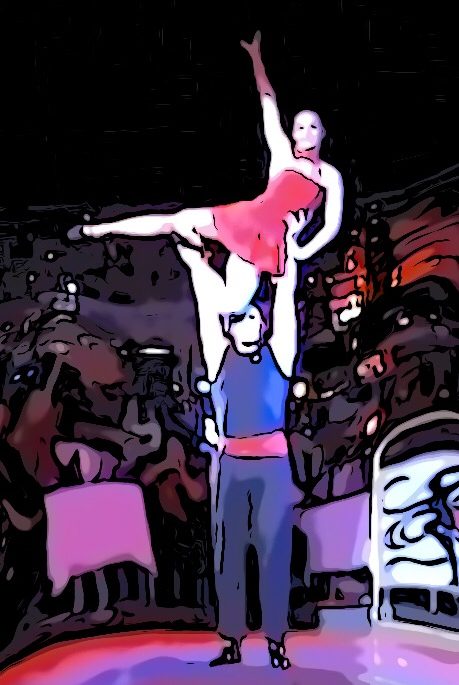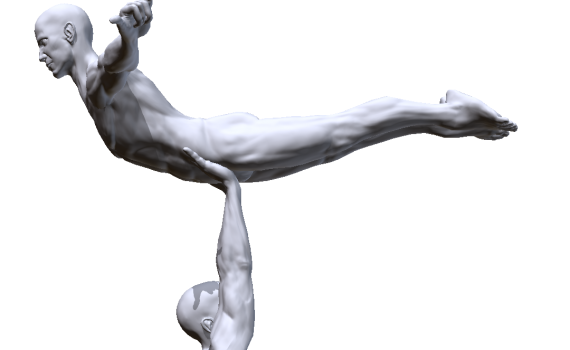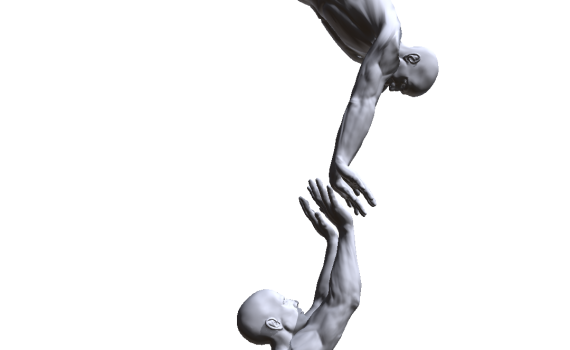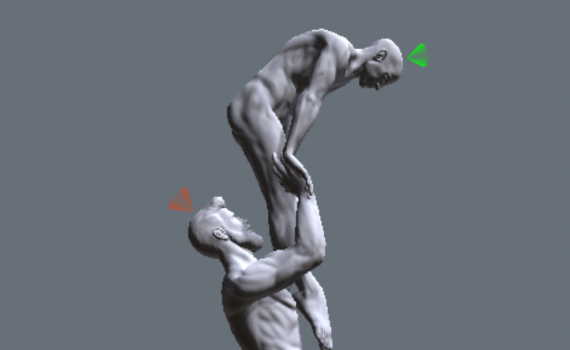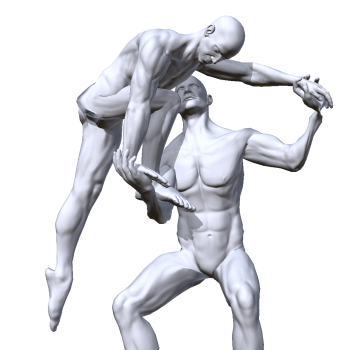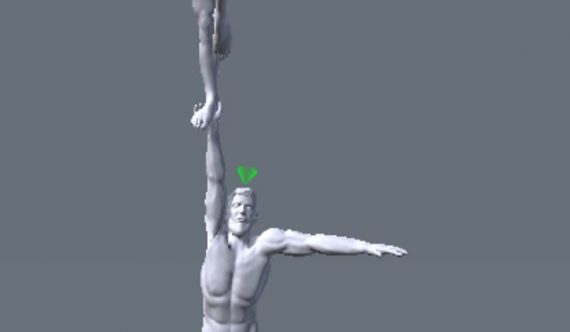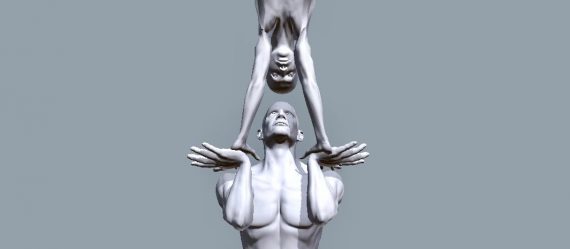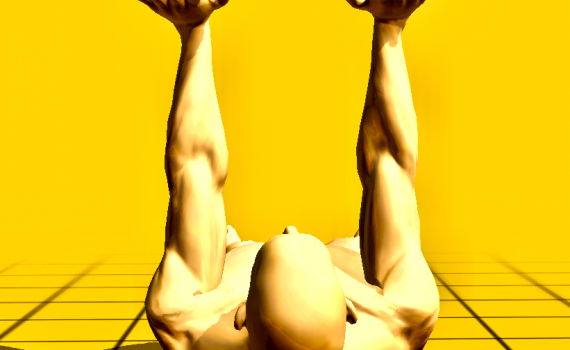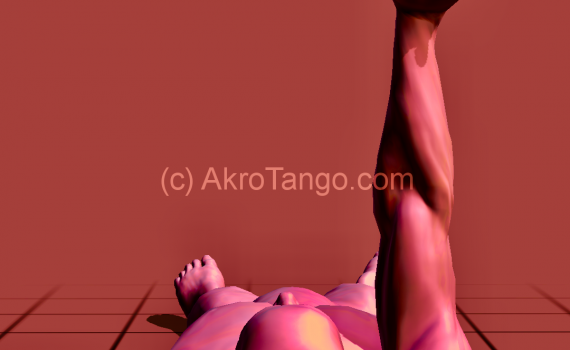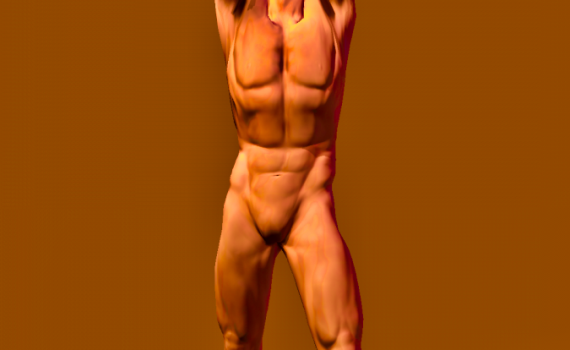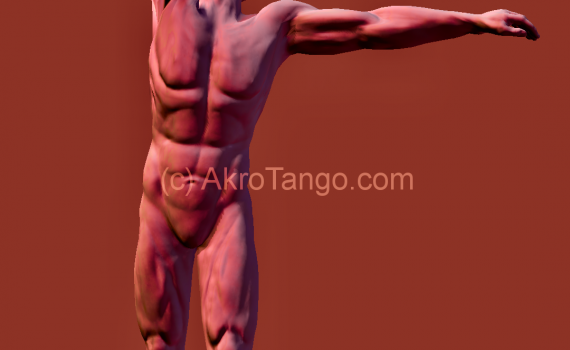The high belly flyer is one of the first figures of the standing base onto the straight arms. As soon as a beginner manages this trick as a base, he rises to the status of an advanced 😉 Although this trick should be feasible even with pure power, I’ve already seen body builders failing with a 60 kg flyer, though they lifted 120 kg while lying and still 80 kg while standing. So what’s so special about this trick? On the one hand, he became a cult in 1987 by Patrick Swayze in “Dirty Dancing”. At that time every young […]
Kategorie: straight arm
The Courbet (Flac) is a trick from the category for experts. This trick starts for the flyer in the handstand and ends when standing in the hands. If the trick is caught on straight arms, it’s a trick for professionals, as you rarely see it in the circus. In principle, the Courbet is the second part of the flicflac, which is why this trick is more and more often called flac. Strictly speaking, the Courbet is only a section of the flac, namely the active leg pull just before standing. Unlike the flac, the flyer for the Courbet (in the partner […]
The Posechka is a trick from the category for experts. Where the term Posechka comes from is probably a myth. The best tip seems to be, that some Eastern European brought this trick to Germany about 30-40 years ago and called it “Posetschka”. Google only offers a Bulgarian translation, which tells us that Posechka means “sober”. Posetschka is not known by Google and Posedchka means saddle, which also does not make more sense!? In German, I prefer to use the term “reel-up”, which at least meaningful describes the type of movement to the handstand. Nevertheless, there are many acrobats who […]
Pitching to handstand using the wheel turn is a trick from the category for experts. Off the ground, it’s one of the easiest possibilities to a handstand on straight arms, as the base easily controls the shearing forces of the flyer. Furthermore, the energy from the legs of the flyer (with maximum torque while stretching) helps to push the handstand comparatively effortlessly on the straight-arm. As pre-exercises I recommend: the wheel-turn to the handstand for the flyer on the floor with the belly to the wall. The start position is as close to the wall as possible with the left […]
Pitching is a trick for the good advanced, but can be increased to any difficulty as desired. As preparation I recommend: the flyer jumps up from the side (lying base) with a quarter turn to the one-legged standing onto the one-armed at straight arm, the flyer jumps up from the front (kneeling base) with a half turn to the one-legged standing onto the one-armed at the short arm and the flyer jumps up from the front (standing base) with a half turn to the standing on the hands with straight arms. This trick starts in the deep squat for the […]
The pitch to counter handstand is also for experts always a challenge… Starting position: The partners stand in front of each other and hold hands. The hands of the flyer are turned outwards, those of the base grip them from below, suitable for the planned final position, the counter-handstand. After the initial tempo, in which the base follows the flyer, the flyer jumps off active and slightly leaned forwards (picture 1). As soon as the contact point is under his center of gravity (picture 2), the flyer starts leaning even more forward (picture 3 = taking off pantyhose). High relieving: […]
The hands should stay over the shoulders. Initially, the base tends to hold hands at head height. At a load in the middle of the hand, however, the line of force is not right. The result is that the hands get bent towards the head, which can stabilize the base only with a lot of force. To increase the lateral stability against rolling, legs can be straddled.
One of the most difficult positions of the base, because he can balance little with his straight-arm. The hand should always keep above the shoulder within this position. The ball of the thumb stays under pressure → does not yield and also does not create a cavity in the palm of your hand! If the free hand is used for stabilization, it supports the ball of the thumb of the balancing hand. Initially, the free hand will stabilize the Einarmer, and then release carefully. Some flyers immediately feel the loss of stability and break off. The free shoulder stays on […]
The balance on the straight arms takes place exclusively over the legs. Again, the picture of balancing a huge ball is very helpful. As soon as the flyer starts to tip out of line, it creates a rotation that balances the base as fast as possible. Simply staying with your hands under the flyer’s focus is not enough! Correcting with the shoulder or elbow inevitably leads to a bent line of force. This in turn results in either a hollow cross, or wastes a lot of power. Not to mention the lack of appeal for the audience. The lying flyer […]
This balance is relatively easy as long as the flyer is stabilized (e.g., sideways flyer or shoulderstand) or by the other hand of the base (e.g., cross-breaker at the leg or knot handstand at the upper arm). However, the balance without some form of stabilization becomes difficult. The entrance usually takes place via one of the stabilized positions … which are already manageable by advanced bases. Without picking up the residual weight from the stabilizing arm, this balance starts extremely shaky. If you have not automated the pick-up, you should practice it again with simpler positions (for example, with lying […]
